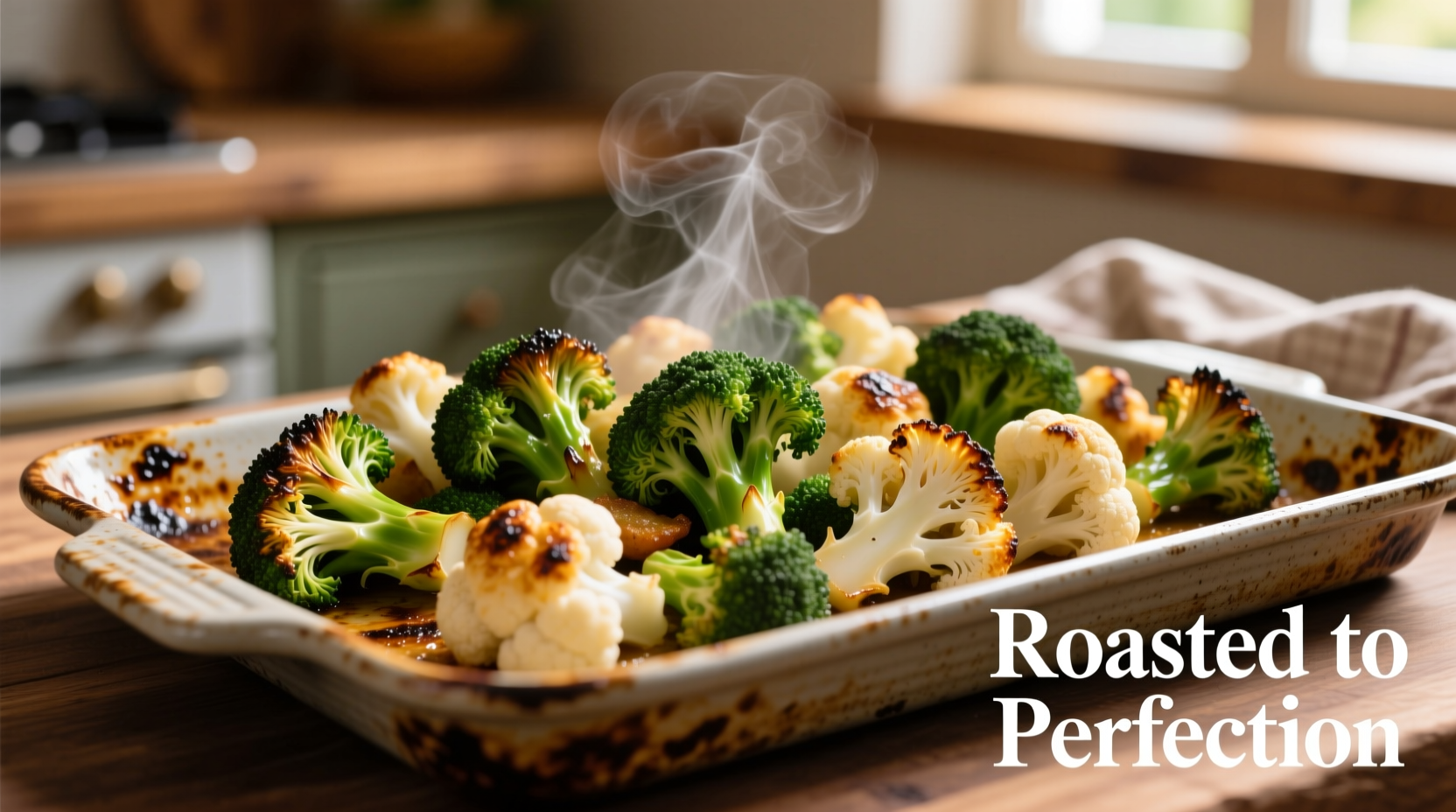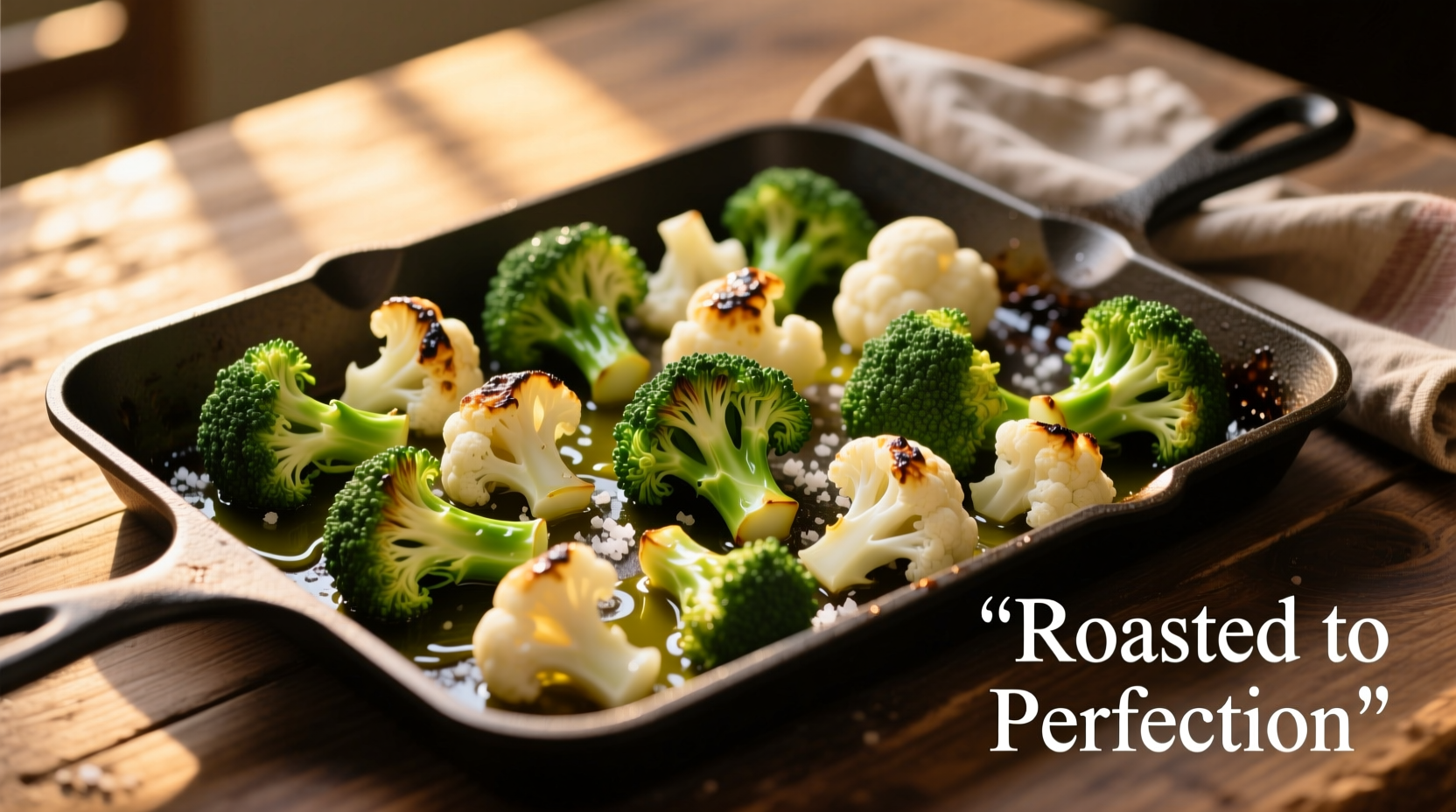Unlock restaurant-quality roasted cruciferous vegetables with science-backed techniques that transform these humble vegetables into showstopping side dishes. Whether you're meal prepping for the week or elevating tonight's dinner, mastering the art of roasting broccoli and cauliflower solves common frustrations like soggy textures and bland flavors.
The Science Behind Successful Roasting
Understanding the chemical reactions during roasting explains why certain techniques work best. When vegetables hit 310°F (154°C), the Maillard reaction begins—creating complex flavors and appealing browned surfaces. Cruciferous vegetables like broccoli and cauliflower contain glucosinolates, compounds that develop richer, nuttier flavors when exposed to dry heat rather than boiling or steaming.
| Oil Type | Smoke Point | Flavor Profile | Best For |
|---|---|---|---|
| Avocado oil | 520°F (271°C) | Neutral | High-heat roasting |
| Extra virgin olive oil | 375°F (190°C) | Fruity, peppery | Finishing or moderate heat |
| Grapeseed oil | 420°F (216°C) | Light, neutral | Standard roasting |
| Sesame oil (toasted) | 350°F (177°C) | Nutty, intense | Finishing Asian variations |
Source: USDA National Nutrient Database and American Oil Chemists' Society testing protocols (ars.usda.gov)
Preparation Protocol: Setting Up for Success
Dry vegetables roast better—moisture creates steam instead of browning. After washing, spread florets on clean kitchen towels and gently roll to absorb surface water. For optimal results, cut broccoli into 1.5-inch florets and cauliflower into 2-inch pieces—uniform sizing ensures even cooking. Keep stems; peel and slice them into ¼-inch rounds for valuable texture variety.

Seasoning Strategy: Flavor Development Timeline
Timing your seasoning creates layered flavors. Toss vegetables with oil and salt first—this draws out surface moisture while the oil carries flavor compounds. Add delicate herbs like thyme or rosemary before roasting, but wait to incorporate garlic, lemon zest, or red pepper flakes until the last 5 minutes to prevent burning. Professional chefs recommend using 1½ tablespoons oil per pound of vegetables—enough for browning without sogginess.
Roasting Technique: The Critical Details
Preheat your oven to 425°F (220°C) with the rack in the upper third position. Line a rimmed baking sheet with parchment paper (not wax paper, which can smoke). Spread vegetables in a single layer with space between pieces—overcrowding causes steaming. For extra crispiness, place a wire rack on the baking sheet before adding vegetables.
Roast for 20-25 minutes, flipping halfway through. The vegetables are done when deeply caramelized at the edges but still tender when pierced with a fork. Immediately after removing from the oven, finish with acid: a squeeze of lemon juice or splash of balsamic vinegar brightens flavors and balances richness.
Troubleshooting Common Roasting Problems
Soggy vegetables? Your oven temperature was too low or vegetables were overcrowded. Next time, increase heat to 450°F and use two baking sheets.
Burnt edges but raw centers? You cut pieces unevenly. Use a mandoline for consistent sizing.
Lack of flavor development? You didn't use enough salt during preparation. Salt draws out moisture and enhances browning reactions.
Flavor Variations and Serving Suggestions
Mediterranean style: Toss with 2 minced garlic cloves, 1 teaspoon dried oregano, and ½ cup crumbled feta during the last 5 minutes of roasting.
Asian-inspired: After roasting, drizzle with 1 tablespoon soy sauce, 1 teaspoon toasted sesame oil, and 2 teaspoons rice vinegar.
Spicy version: Add ¼ teaspoon cayenne pepper to the oil mixture before roasting, then finish with fresh cilantro.
Pair roasted broccoli and cauliflower with grilled proteins or incorporate into grain bowls. Leftovers keep refrigerated for 4 days—reheat in a 400°F oven for 8-10 minutes to restore crispness (microwaving makes them soggy).
When Roasting Works Best (and When It Doesn't)
Roasting excels with dense vegetables that benefit from caramelization but has limitations. Cruciferous vegetables respond exceptionally well due to their natural sugar content. However, for dishes requiring precise texture control (like stir-fries) or when preserving maximum vitamin C (which degrades above 300°F), steaming might be preferable. The chart below shows optimal cooking methods by vegetable type:
| Vegetable Type | Best Cooking Method | Why |
|---|---|---|
| Cruciferous (broccoli, cauliflower) | Roasting | Develops nutty flavors through Maillard reaction |
| Root vegetables (carrots, potatoes) | Roasting | Converts starches to sugars for natural sweetness |
| Leafy greens (spinach, kale) | Sautéing | Prevents burning while maintaining texture |
| Water-rich (zucchini, tomatoes) | Grilling | Removes excess moisture quickly |
Frequently Asked Questions
Can I roast broccoli and cauliflower together?
Yes, but cut cauliflower slightly larger since it takes longer to cook. Both vegetables roast perfectly at 425°F for 20-25 minutes when properly spaced on the baking sheet.
Why do my roasted vegetables stick to the pan?
Vegetables stick when the pan isn't hot enough before adding them or when using insufficient oil. Preheat your baking sheet for 5 minutes before adding oiled vegetables, or line with parchment paper for guaranteed release.
Should I cover vegetables while roasting?
Never cover cruciferous vegetables while roasting. Trapped steam prevents browning and creates soggy textures. The dry heat environment is essential for proper caramelization.
How do I prevent burning the edges?
Cut uniform pieces, avoid overcrowding the pan, and rotate the baking sheet halfway through cooking. If edges brown too quickly, reduce oven temperature by 25°F and extend cooking time slightly.
Do roasted vegetables lose nutrients?
Roasting preserves more nutrients than boiling. While some heat-sensitive vitamins decrease, the fat-soluble compounds in cruciferous vegetables become more bioavailable. The American Journal of Clinical Nutrition confirms roasting maintains 80-90% of original nutrient content.











 浙公网安备
33010002000092号
浙公网安备
33010002000092号 浙B2-20120091-4
浙B2-20120091-4